- Wildhaven Permaculture Design
Main menu:
Pasture Improvement -
"Use Small and Slow Solutions"
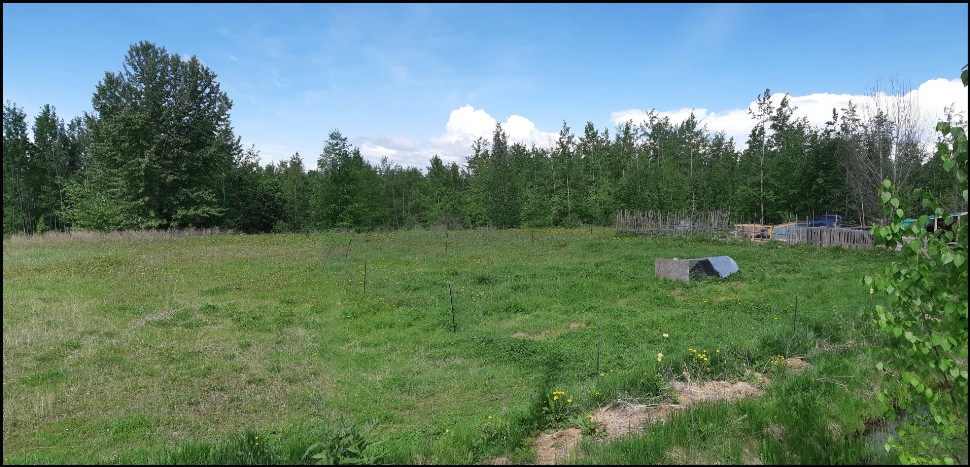
Project Description
This project started as a demonstration and comparison of the effects of periodic mob grazing by sheep and chickens, along with the addition of substancial amounts of organic matter, to the health of a grazing pasture. The large, flat, open area along the eastern edge of this property was previously overgrazed by horses and is weedy and compact with very little topsoil. As a result, it dries out quickly during the summer and grazing is limited to the early spring when rain is more frequent. This seemed like an ideal piece of ground to set up a side by side experiment consisting of a well managed plot with integrated livestock versus the "natural" pasture with no inputs from me. We are just going into our 3rd season with this project and the results are astounding! I knew that the results would be good but the test plot has responded to the intense managment even better than I had hoped for.
Methods Used and Progress
The first year (2017) I covered the test plot (approximately 350 sq ft) with a heavy layer of semi composted sheep manure and bedding that I had dug out of the winter shelters. I built a small 4x 8 foot chicken tractor, big enough to comfortably house 2 -
Year two (2018) I applied another heavy layer of composted sheep bedding from the shelters and ran the chickens over it again. This time, the chickens made a second pass later in the fall as well. The difference in growth that spring was apparent. During much of the year you could see the growth was much greener and lusher than the rest of the field. The sheep grazed the plot several times that spring and summer but only for part days at a time and they were supplemented with other feed.
Year three (2019) I did not apply any compost/mulch this spring. I might add another layer later in the summer or fall. I started the chickens on the plot as soon as the grass was up a couple inches but by mid May the grass and clover were so thick and tall I had trouble moving them! They have been been relocated to the outer edge of the field to start working on a new area. I will move them back into this plot after the sheep have had a chance to eat it down. The fence is set up and awaiting the charger so I can let my 5 ewes (my flock has grown a wee bit!) out to graze it as soon as they are done with the forest pasture they are currently working in. I am expecting at least 3-
Another part of my plan for this area is to plant a somewhat open canopy food/feed forest along the eastern and western edges. This will eventually provide some shade to the grazing cells, helping even more to reduce the amount of moisture being lost through evaporation in the hot sun. I have roughly 2/3rds of the eastern edge planted with mountain ash, hazelnut, elderberry, a few fruit trees, berries shrubs and various support species. I hope to get some work done on the western edge this summer but need to dig a swale or possibly a "sunken" heugleculture.
Conclusion
In reality, a one time tilling of the land to reduce compaction followed by seeding with pasture grasses would be much more efficient and reasonable if the pasture was then maintained in a regenerative way. This project is more about research and observation than quickly turning the area into lush grazing space. Regenerating a pasture without the use of any machinery or any irrigation is time consuming, but also incredibly rewarding! This project has been worked on with no machinery at all, just a few hand tools, a wheelbarrow, a small chicken tractor with a couple geriatric hens and my teeny flock of sheep. It could easily be scaled up significantly with the use of a small garden tractor to help with the mulch spreading, a larger chicken tractor with more productive layers or even some meat birds and a bigger flock of sheep or even a small herd of cows.
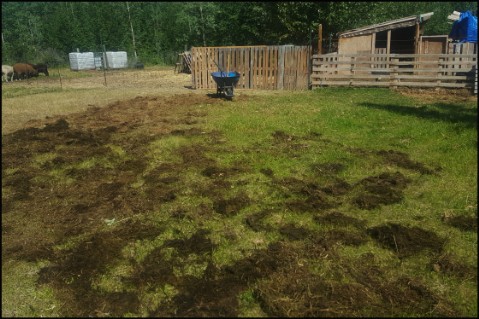
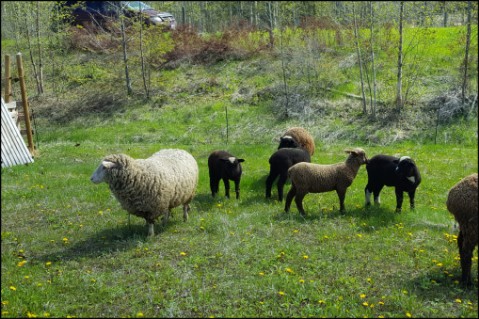
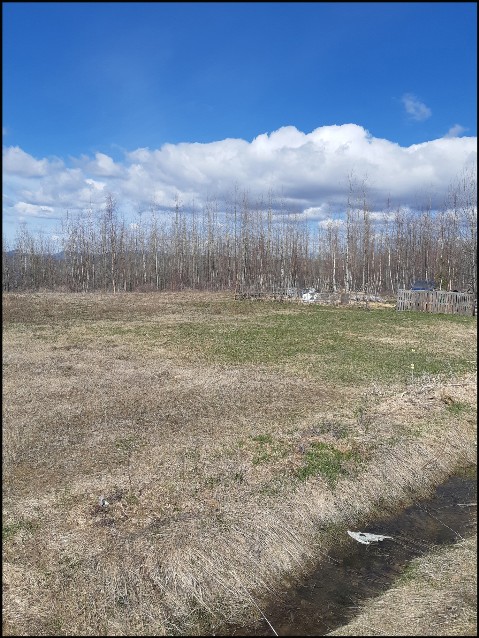
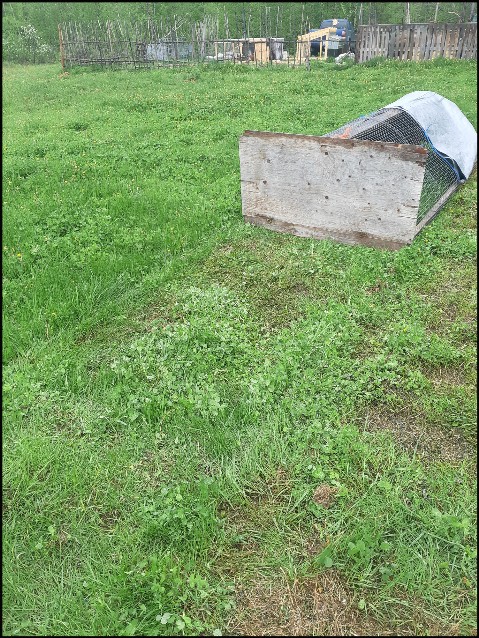

Pasture Improvement Project Photo's
Top left -
Top right -
Middle left -
Middle right -
Bottom collage is a side by side comparison of the improved pasture and the unimproved area. The two photo's in the center were taken only a few feet apart and at the same time in May 2019, the left is the unimproved area, the right is the lush growth in the improved area! The sheep photos are of them grazing the same area in May 2017 (left) and May 2019 (right)